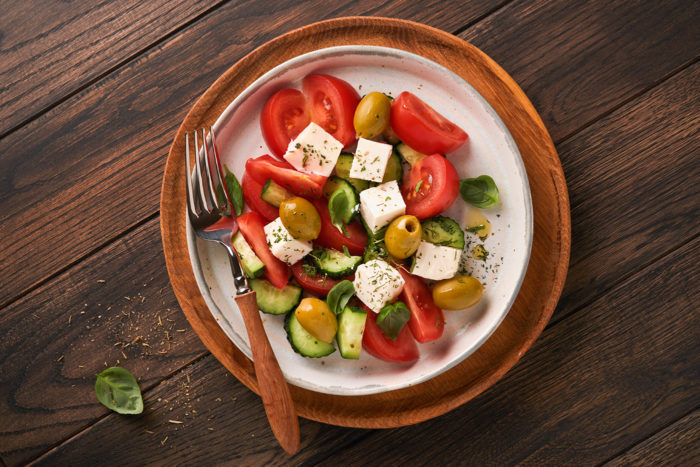By Liana Flint, clinical dietitian at CHOC
Healthy eating during adolescence is important because many kids and teens experience body changes and growth spurts during this time. They may experience an increase in appetite during this and need healthy foods to meet their growth needs.
Adolescents tend to eat more meals away from home than younger children so meal convenience is important to many adolescents as they navigate busy school schedules and activities. The following healthy eating tips can help make sure your teens are getting the nutrition they need.
Offer teens three balanced meals a day
Teens should have three balanced meals with nutrient-dense snacks two to three times throughout the day.
Adolescents are still growing, and many require additional energy and nutrients to support active lifestyles. Eating at regular times throughout the day supports healthy metabolism and helps ensure that your child is receiving enough nutrition.
On your teen’s plate, aim for 50% of it to be fruits and vegetables, 25% whole grains, and 25% lean proteins.
Snacks should contain at least two to three different food groups to achieve balance: for example, apples with peanut butter (fruit and protein), crackers and cheese (grains and dairy) or avocado on toast (healthy fat and grains).
Increase fiber and decrease added sodium in teens’ diets
Try to increase fiber in your teen’s diet while decreasing sources of added sodium.
Good sources of fiber include whole wheat or whole grain bread products, oatmeal, whole grain pasta, brown rice and fresh produce. Added sodium is found in many packaged and processed foods, so home-cooked meals are often the most nutritious.
Encourage water for hydration for kids and teens
Fruit juices and sodas can be a hidden source of added sugar to the diet. Water helps maintain proper cell function, and supports optimal physical activity or sports performance.
Many teens like to drink coffee, tea, soda or energy drinks. These beverages can have large amounts of caffeine that may interfere with regular sleep or concentration, and can even cause dependence. Try to limit your teen to only one caffeinated drink per day, and provide decaffeinated options when possible.
Helpful mealtime considerations for adolescents
In order to promote healthy eating in adolescents and teens, it can be helpful for families to practice positive mealtime behaviors. Consider the following tips to promote both healthy eating and healthy relationships with food:
- Model healthy eating behaviors at home. Eating together as a family has been shown to support family bonds, provide more nutritious meals and decrease the risks of substance use and disordered eating behaviors.
- Take your teen’s suggestions, when possible, regarding foods to prepare at home. Try to involve your teen in the cooking process to build their confidence in the kitchen and teach them how to build balanced meals!
- Have several nutritious snack foods readily available. Oftentimes, teenagers will eat whatever is convenient, and they can also take these foods on the go instead of relying on less nutritious options. For example, setting a bowl of portable fruit on the counter for easy access.
- Remember that all foods can fit in a balanced diet. No foods need to be considered off-limits unless recommended by a medical professional. If you are providing a variety of foods and focusing on nutrient-dense meals/snacks where possible, you can include some fun foods in the diet without worry!
Recipe idea for teens

Cucumber Caprese Salad
This is an easy vegetarian dish that can be served as a side dish or even an entrée during the hot summer months. It contains a variety of fresh vegetables and heart-healthy olive oil, and requires very little prep time.
Prep time: 10 minutes
Serves: 6-8
Ingredients:
- 2 English cucumbers, sliced into coins
- 18 oz grape or cherry tomatoes, cut in halves
- ½ red onion, chopped
- 8 oz fresh mozzarella balls or cubes
- 2 tbsp balsamic or red wine vinegar
- 3 tbsp olive oil
- 2 tbsp fresh basil
- ¼ to ½ tsp salt, or to taste
- ¼ to ½ tsp black pepper, or to taste
Directions:
- Combine all ingredients in a large bowl and toss well to combine, adding salt and pepper to taste. Store in the fridge until ready to serve. Cover and refrigerate leftovers for up to 5 days.
Get more expert health advice delivered to your inbox monthly by subscribing to the KidsHealth newsletter here.
Learn more about CHOC’s Clinical Nutrition Program
At CHOC, we specialize in providing a full continuum of pediatric nutrition services, including inpatient and outpatient services, depending on our patients’ needs.





